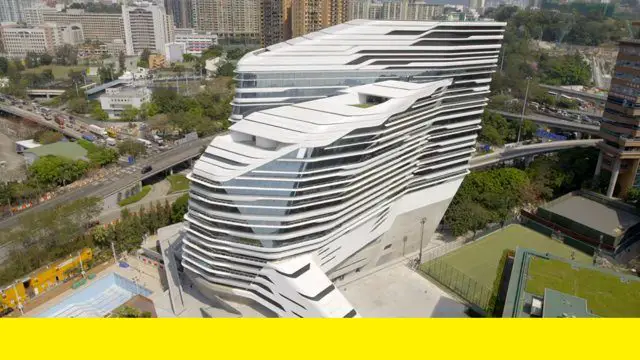David Adjaye is described as an architect with an artist’s sensibility, his ingenious use of materials and showcasing of light have defined his work. At Design Indaba he talked about how architecture can bind people and places together.
 Robert Barnes
Robert Barnes
jockey club innovation tower by zaha hadid
Zaha hadid architects has finalized construction of the hong kong polytechnic university’s jockey club innovation tower. Located on a narrow, irregular site at the northeastern tip of the university campus (bordered by the university’s football ground to the south, and the Chatham Road/ Kowloon Corridor motorway interchange to the north), the JCIT is connected to the heart of the campus; encouraging the university’s various faculties and schools to develop multidisciplinary initiatives and engagement with the community, government, industry, NGO’s and academia.
Photography by © Iwan Baan and © Doublespace
Project info
location: hong kong, china
client: hong kong polytechnic university
completed: 2013
area: 15,000 sqm (161,459 sqf)
height: 76 m (250 ft)
capacity: 1450 people
Project Team: Hinki Kong, Jinqi Huang, Bianca Cheung, Charles Kwan, Juan Liu, Junkai Jian, Zhenjiang Guo, Uli Blum, Long Jiang, Yang Jingwen, Bessie Tam, Koren Sin, Xu Hui, Tian Zhong
Competition Team: Hinki Kwong, Melodie Leung, Long Jiang, Zhenjiang Guo, Yang Jingwen, Miron Mutyaba, Pavlos Xanthopoulus, Margarita Yordanova Valova
Local Architect: AGC Design Ltd (Hong Kong) AD+RG (Competion Stage),
Geotechnical / Structure / Mep / Façade Engineer: Ove Arup & Partners Hong Kong Ltd
Landscape : Team 73 Hong Kong Ltd
Acoustic: Westwood Hong & Associates Ltd
Quantity Surveyor : Rider Levett Bucknall Ltd.
General Contractor : Shui On Construction Com- pany Ltd., Hong Kong
Façade Contractor : YKK AP Facade Hong Kong LTD / Beijing Jangho Curtain Wall Co. Ltd.
Hong kong’s jockey club innovation tower
Hong kong’s jockey club innovation tower the new home of the region’s polytechnic university (polyU) school of design, and the jockey club design institute for social innovation. Designed by zaha hadid, the 15-storey, 15,000 sq. m. tower accommodates more than 1,800 students and staff, with facilities for design education and innovation that include: design studios, labs and workshops, exhibition areas, multi-functional classrooms, lecture theatre and communal lounge.
The tower’s design promotes a multidisciplinary environment by connecting the variety of programs within the School of Design; establishing a collective research culture where many contributions and innovations can feed off each other.
Carolyn Steel – How food shapes our cities
Every day, in a city the size of London, 30 million meals are served. But where does all the food come from? Architect Carolyn Steel discusses the daily miracle of feeding a city, and shows how ancient food routes shaped the modern world.
South Korean seven-storey building tilted to one side
A seven-storey building in the South Korean city of Asan has suddenly tilted to one side. The building was still under construction when it began to collapse sideways on Monday morning. No one was hurt in the incident.
Corian® 2.0 Milan Design Week 2014
A new and exclusive manufacturing technology, innovative solutions for our increasingly digital society, the fascination of translucency with advanced lighting and electronics systems. Take all … Read more















